Space Vector Modulation for an Indirect Matrix Converter with Improved Input Power Factor
Abstract
:1. Introduction
2. Operational Principles of IMC and Conventional SVM Method
2.1. Operational Principles of IMC
2.2. Conventional SVM Method
3. SVM to Compensate Input Power Factor
3.1. Input Filter Analysis
3.2. The proposed SVM Method
4. Simulation Results
- Three-phase load: R = 12 Ω, L = 10 mH.
- Input filter inductance: L = 1 mH, input filter capacitance: C = 25 µF.
- Switching frequency: 10 kHz (Ts = 100 μs).
- Three-phase power supply voltage for the IMC set to 100 V (line-to-neutral voltage), frequency: 60 Hz.
5. Experimental Results
6. Conclusions
Acknowledgments
Author Contributions
Conflicts of Interest
References
- Alesina, A.; Venturini, M.G.B. Solid-state power conversion: A Fourier analysis approach to generalized transformer synthesis. IEEE Trans. Circuits Syst. 1981, 28, 319–330. [Google Scholar] [CrossRef]
- Arevalo, S.L.; Zanchetta, P.; Wheeler, P.W. Control of a matrix converter-based AC power supply for aircrafts under unbalanced conditions. In Proceedings of the IECON 2007, Taipei, Taiwan, 5–8 November 2007; pp. 1823–1828. [Google Scholar]
- Sebtahmadi, S.S.; Pirasteh, H.; Kaboli, S.H.A.; Radan, A.; Mekhilef, S. A 12-sector space vector switching scheme for performance improvement of matrix-converter-based DTC of IM drive. IEEE Trans. Power Electron. 2015, 30, 3804–3817. [Google Scholar] [CrossRef]
- Jussila, M.; Eskola, M.; Tuusa, H. Analysis of non-idealities in direct and indirect matrix converters. In Proceedings of the EPE–ECCE Europe 2005, Dresden, Germany, 11–14 September 2005; pp. 1–10. [Google Scholar]
- Kolar, J.W.; Schafmeister, F.; Round, S.D.; Ertl, H. Novel three-phase AC-AC sparse matrix converters. IEEE Trans. Power Electron. 2007, 22, 1649–1661. [Google Scholar] [CrossRef]
- Nguyen, T.D.; Lee, H.H. Development of a three-to-five-phase indirect matrix converter with carrier-based PWM based on space-vector modulation analysis. IEEE Trans. Ind. Electron. 2016, 63, 13–24. [Google Scholar] [CrossRef]
- Nguyen, T.D.; Lee, H.H. Dual three-phase indirect matrix converter with carrier-based PWM method. IEEE Trans. Power Electron. 2014, 29, 569–581. [Google Scholar] [CrossRef]
- Nguyen, T.D.; Lee, H.H. Modulation strategies to reduce common-mode voltage for indirect matrix converters. IEEE Trans. Ind. Electron. 2012, 59, 129–140. [Google Scholar] [CrossRef]
- Kim, S.; Yoon, Y.D.; Sul, S.K. Pulsewidth modulation method of matrix converter for reducing output current ripple. IEEE Trans. Power Electron. 2010, 25, 2620–2629. [Google Scholar] [CrossRef]
- Nguyen, H.M.; Lee, H.H.; Chun, T.W. Input power factor compensation algorithms using a new direct-SVM method for matrix converter. IEEE Trans. Ind. Electron. 2011, 58, 232–243. [Google Scholar] [CrossRef]
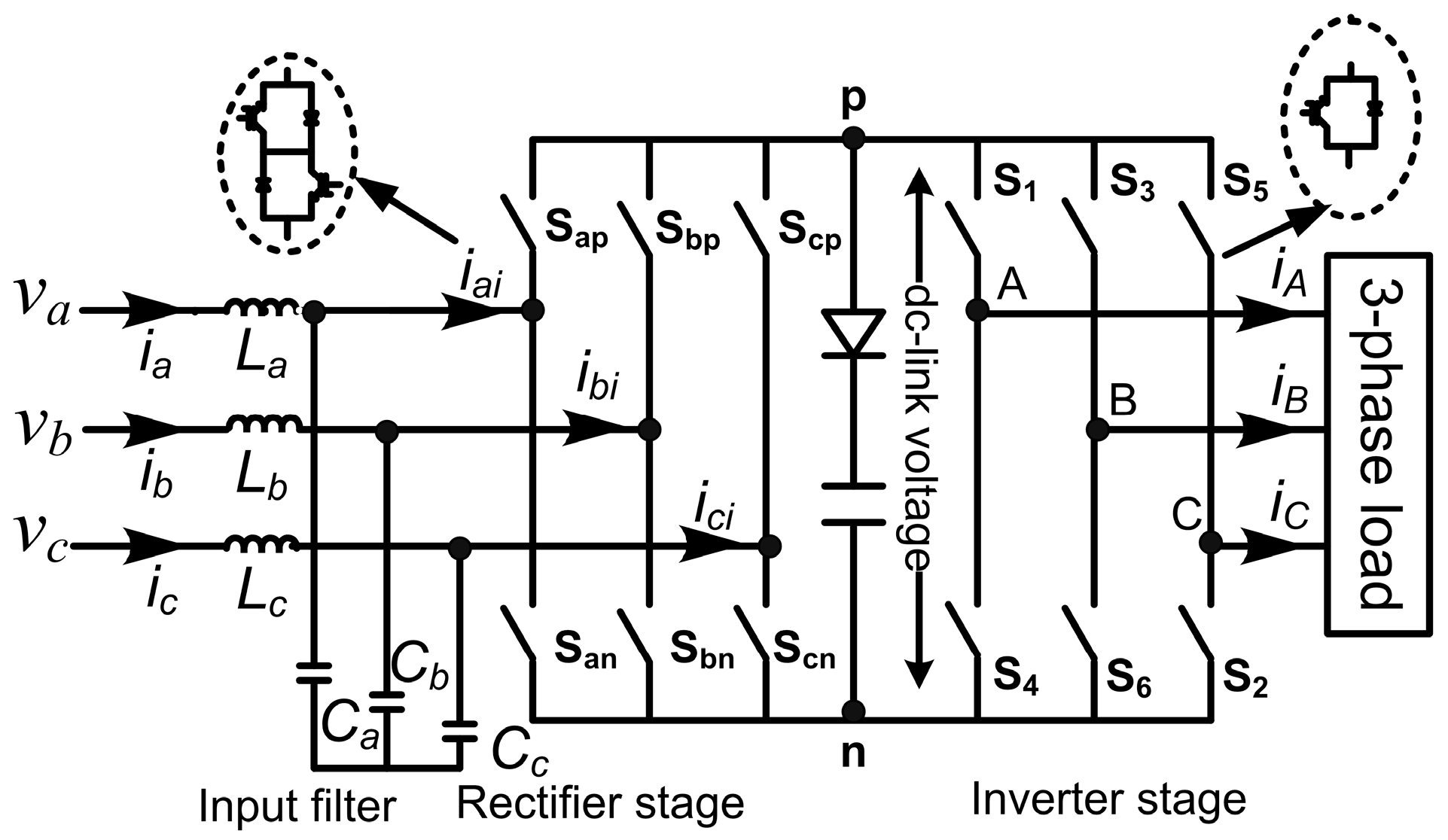


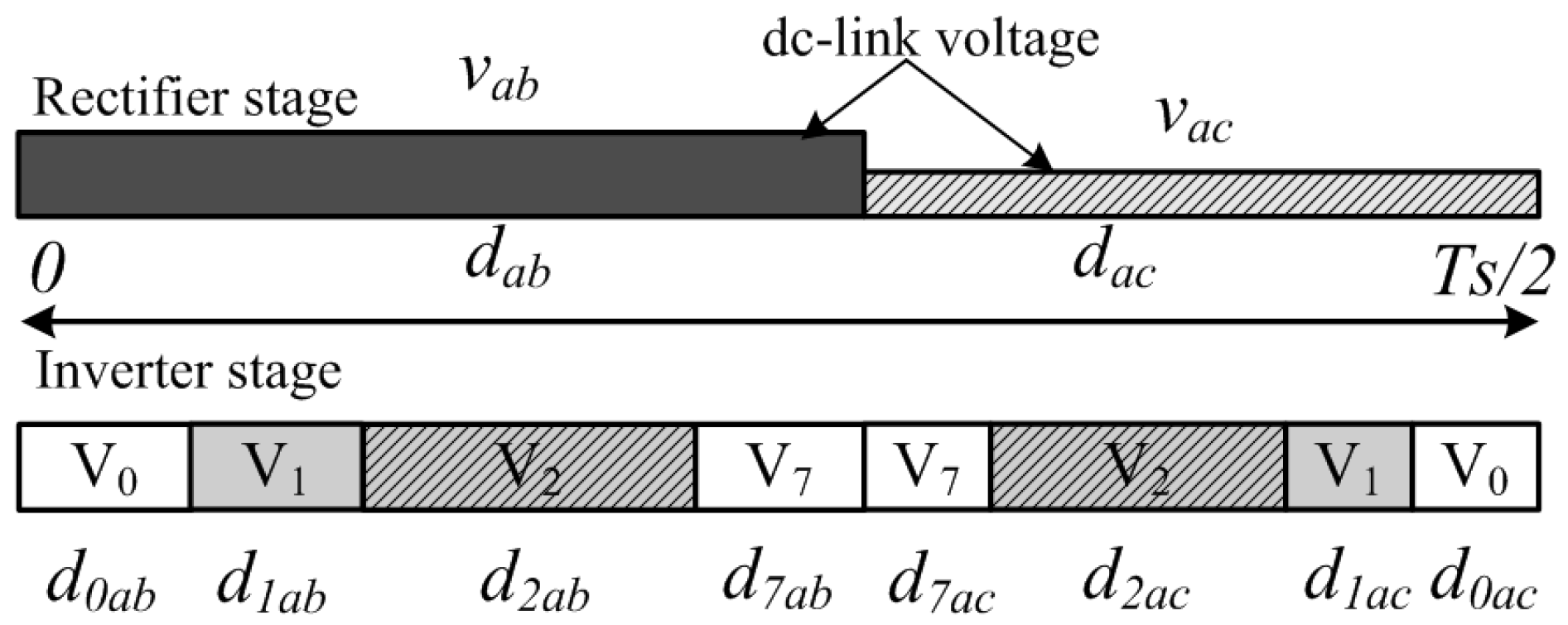
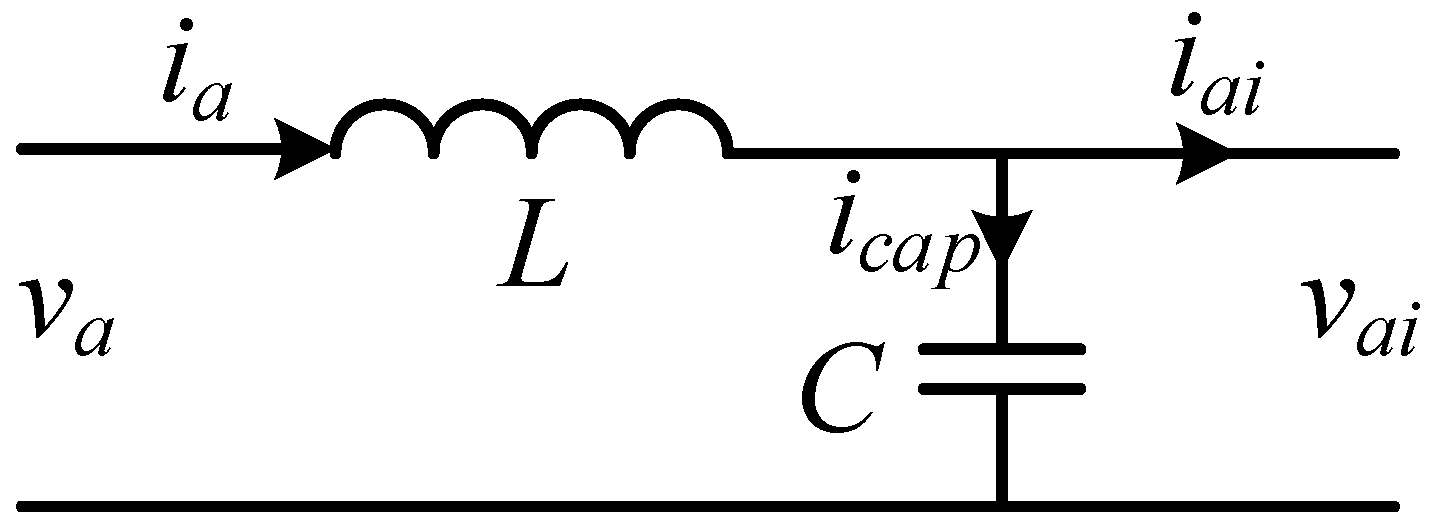
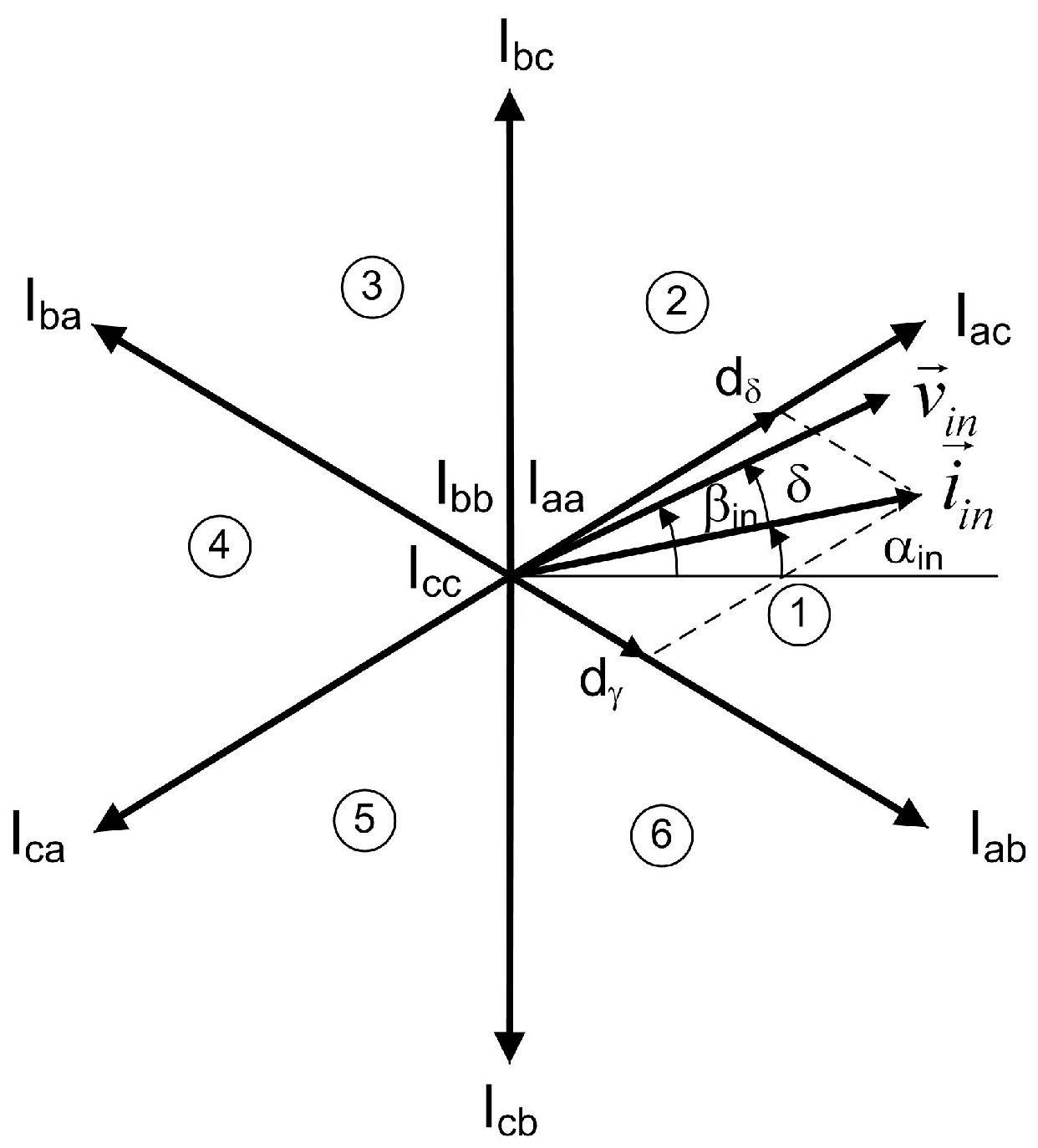





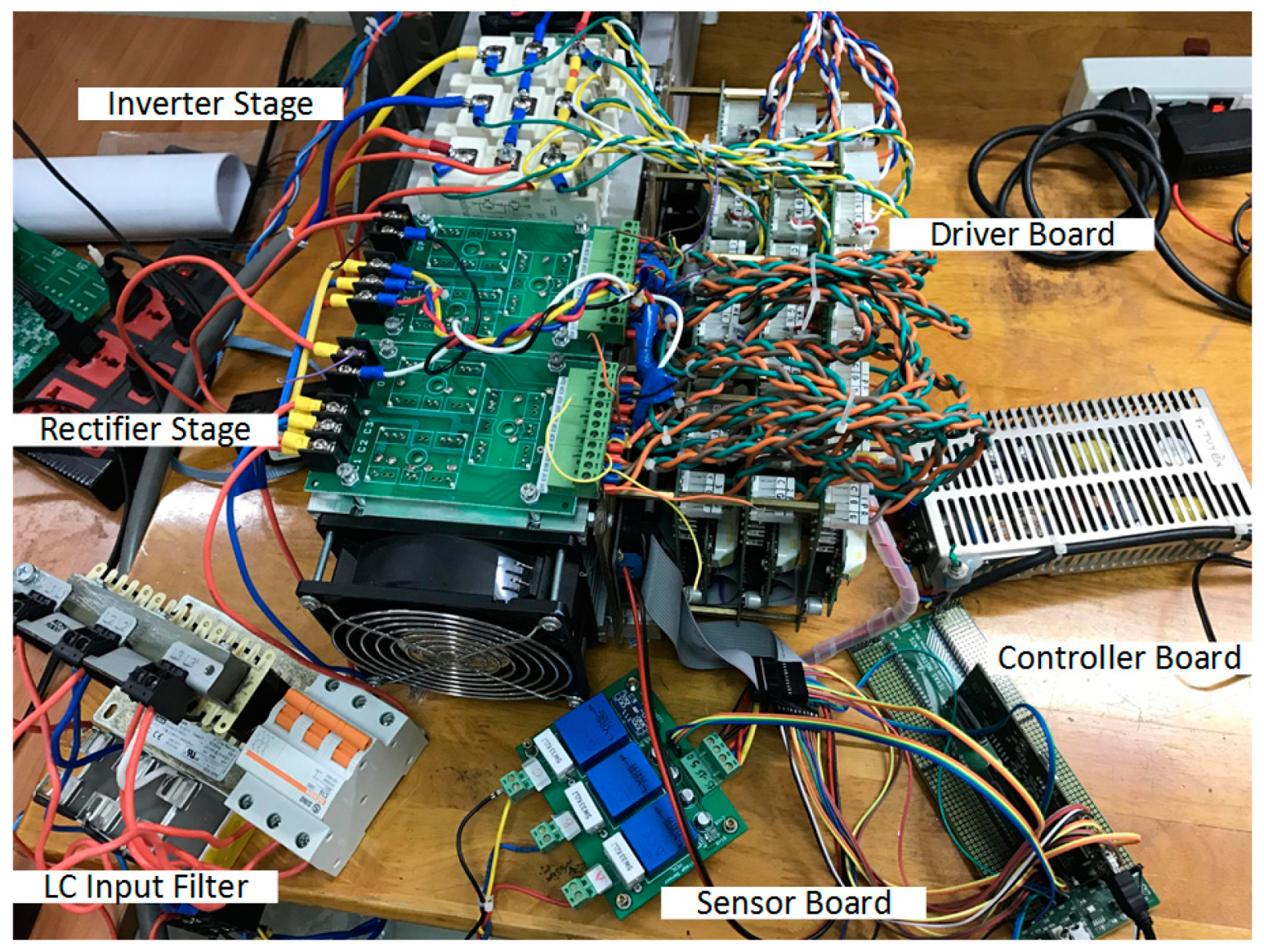
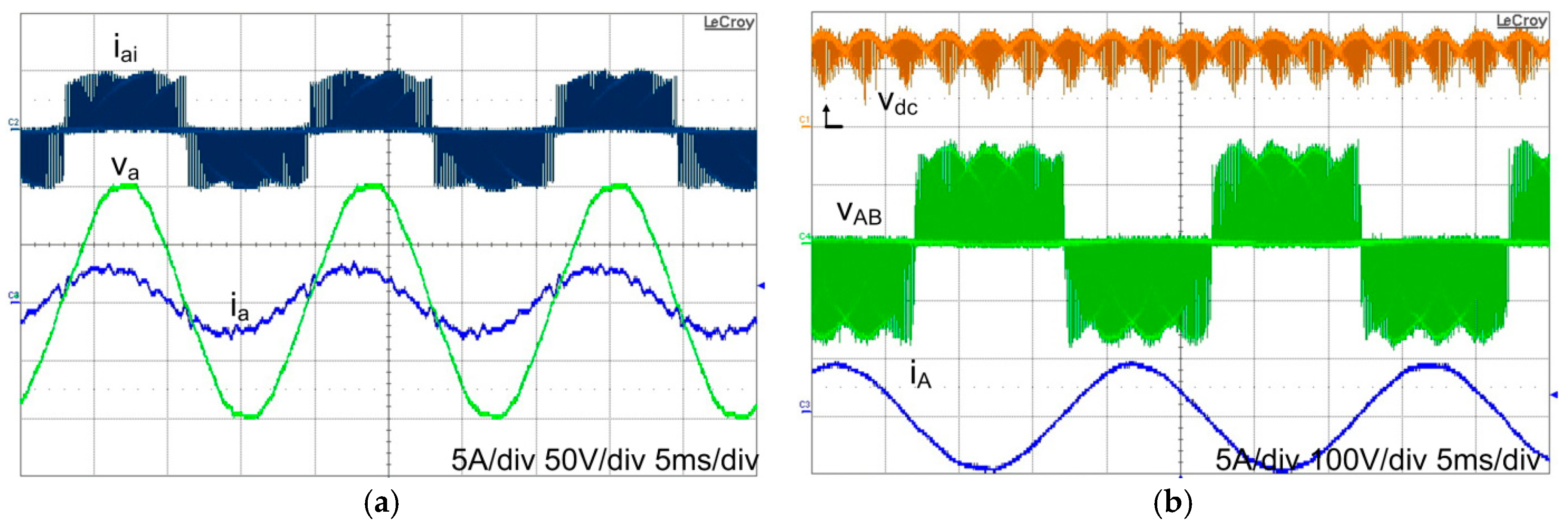
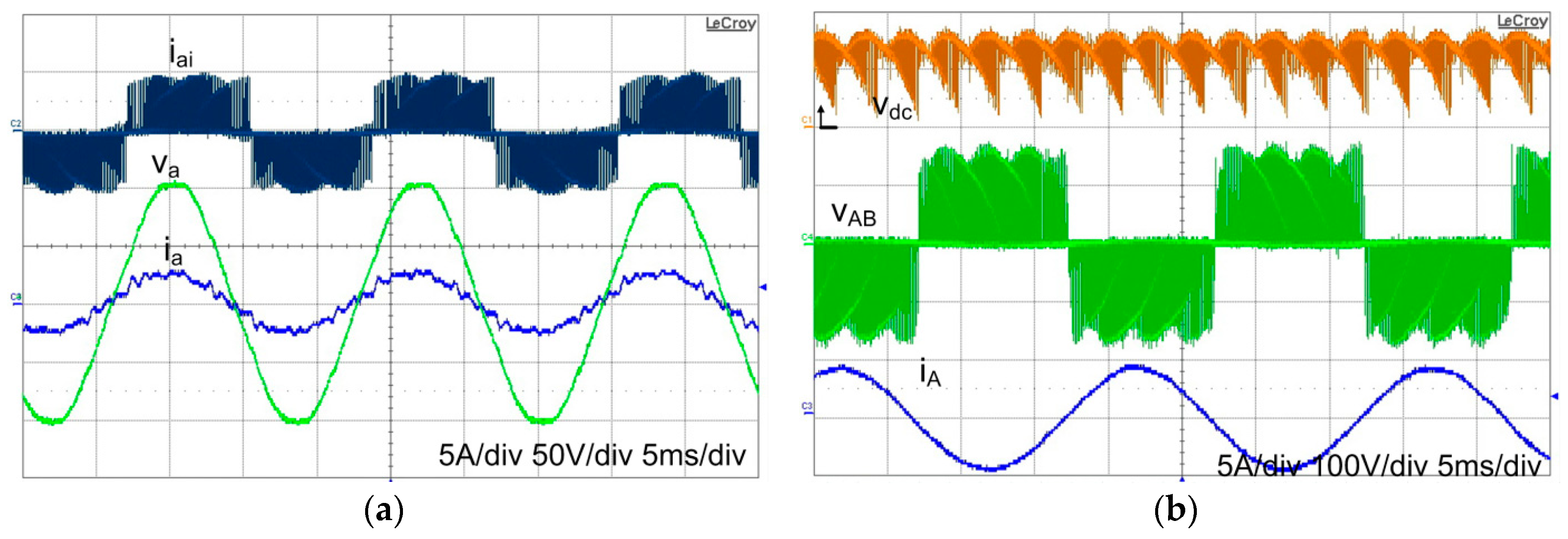
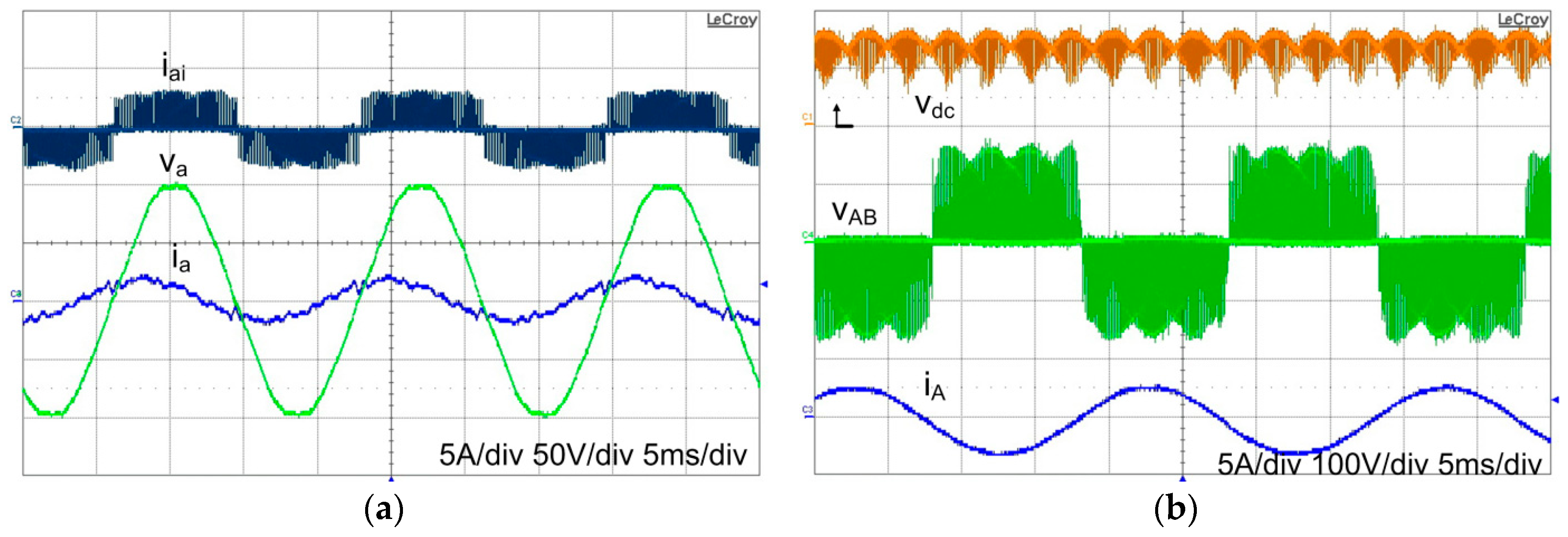
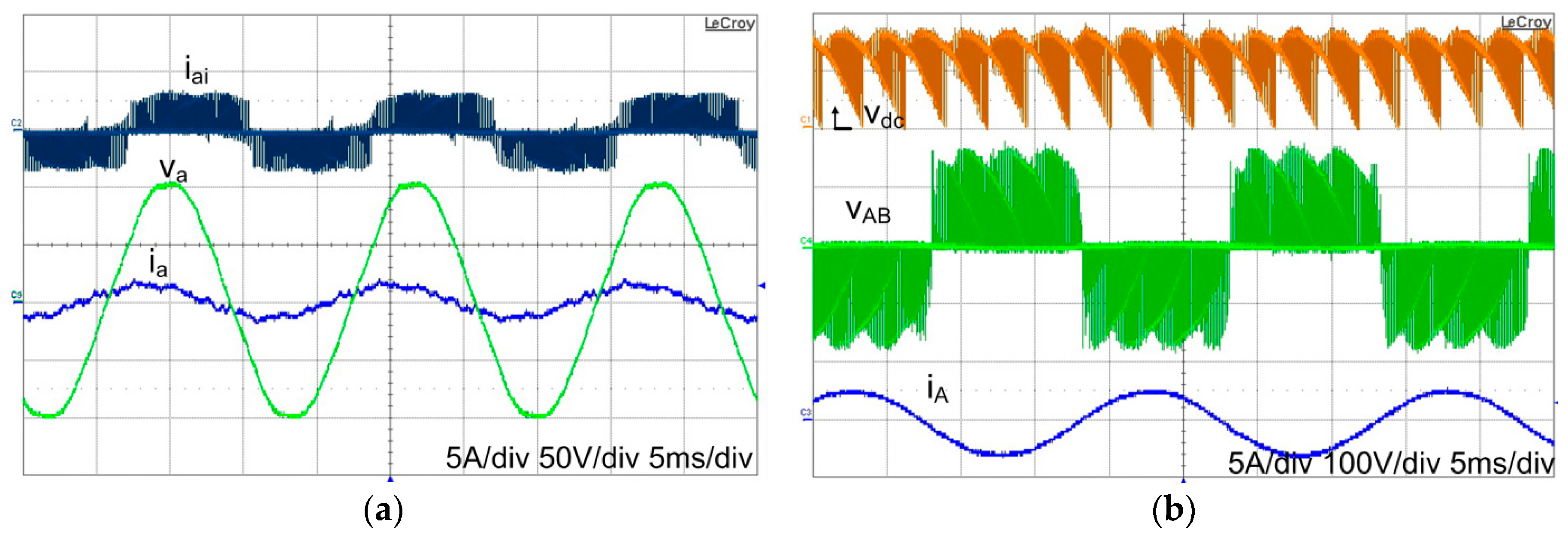
| Input Sector | Conducting Switch | Modulated Switches | Dc-Link Voltage | Average Value (Vdc) |
|---|---|---|---|---|
| 1 | Sap | Sbn, Scn | vab, vac | |
| 2 | Scn | Sap, Sbp | vac, vbc | |
| 3 | Sbp | San, Scn | vba, vbc | |
| 4 | San | Sbp, Scp | vba, vca | |
| 5 | Scp | Sbn, San | vcb, vca | |
| 6 | Sbn | Sap, Scp | vab, vcb |
| Switching State | Input Current | ||||||
|---|---|---|---|---|---|---|---|
| Sap | Sbp | Scp | San | Sbn | Scn | Iin | αin |
| 1 | 0 | 0 | 0 | 1 | 0 | ||
| 1 | 0 | 0 | 0 | 0 | 1 | ||
| 0 | 1 | 0 | 0 | 0 | 1 | ||
| 0 | 1 | 0 | 1 | 0 | 0 | ||
| 0 | 0 | 1 | 1 | 0 | 0 | ||
| 0 | 0 | 1 | 0 | 1 | 0 | ||
| 1 | 0 | 0 | 1 | 0 | 0 | 0 | x |
| 0 | 1 | 0 | 0 | 1 | 0 | 0 | x |
| 0 | 0 | 1 | 0 | 0 | 1 | 0 | x |
© 2017 by the authors. Licensee MDPI, Basel, Switzerland. This article is an open access article distributed under the terms and conditions of the Creative Commons Attribution (CC BY) license (http://creativecommons.org/licenses/by/4.0/).
Share and Cite
Tuyen, N.D.; Dzung, P.Q. Space Vector Modulation for an Indirect Matrix Converter with Improved Input Power Factor. Energies 2017, 10, 588. https://doi.org/10.3390/en10050588
Tuyen ND, Dzung PQ. Space Vector Modulation for an Indirect Matrix Converter with Improved Input Power Factor. Energies. 2017; 10(5):588. https://doi.org/10.3390/en10050588
Chicago/Turabian StyleTuyen, Nguyen Dinh, and Phan Quoc Dzung. 2017. "Space Vector Modulation for an Indirect Matrix Converter with Improved Input Power Factor" Energies 10, no. 5: 588. https://doi.org/10.3390/en10050588





